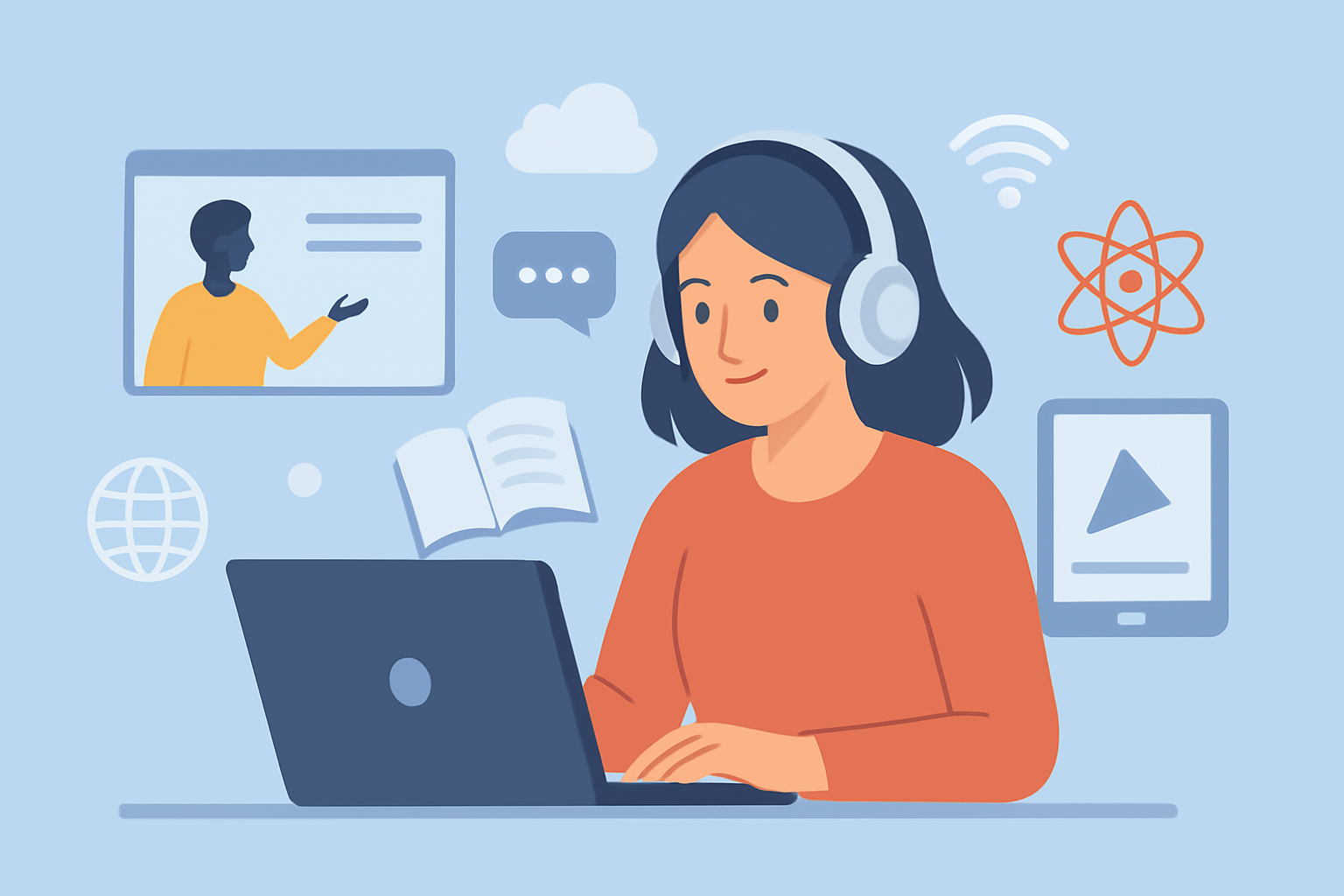
The Future of Learning: How Technology Is Shaping Modern Education
Education has always been the backbone of human progress. For centuries, learning took place in traditional classrooms with chalkboards, textbooks, and face-to-face interaction between teachers and students. However, the 21st century has brought revolutionary changes to the way we acquire knowledge. With the rapid advancement of technology, modern education is no longer confined within four walls. From online classrooms to artificial intelligence–driven learning platforms, technology is reshaping how students learn, how teachers teach, and how education is delivered across the globe.
In this article, we will explore how technology is transforming education, the benefits and challenges it brings, and what the future of learning may look like.
1. The Shift from Traditional Classrooms to Digital Learning
In the past, classrooms were centered around direct instruction, where the teacher was the primary source of information. Today, that dynamic has shifted dramatically. Technology has introduced multiple learning environments:
- E-learning platforms such as Coursera, Khan Academy, and Udemy provide courses for learners of all ages.
- Virtual classrooms allow students to attend lessons from anywhere in the world.
- Blended learning models combine face-to-face teaching with online resources, offering flexibility.
This transformation is making education more accessible, especially for students in remote areas who may not have access to quality schools or resources.
2. Personalized Learning Through Artificial Intelligence
One of the most significant ways technology is shaping modern education is through personalized learning. Artificial intelligence (AI) analyzes student performance and creates customized learning plans based on their strengths and weaknesses.
For example:
- AI-powered tutoring systems like Socratic and Carnegie Learning help students at their own pace.
- Adaptive learning platforms provide additional practice where a student struggles, ensuring mastery of a topic before moving on.
- Data-driven insights allow teachers to understand student progress and adjust their teaching methods accordingly.
Personalized learning ensures that no student is left behind and that advanced learners are continuously challenged.
3. The Rise of Virtual and Augmented Reality in Education
Virtual Reality (VR) and Augmented Reality (AR) are no longer limited to gaming. They are becoming powerful tools in education, making learning more interactive and immersive.
- Virtual Reality (VR): Students can take virtual field trips to historical sites, explore outer space, or dive into the ocean without leaving their classrooms.
- Augmented Reality (AR): AR apps allow learners to view 3D models of the human body, machinery, or chemical structures on their devices.
By engaging multiple senses, VR and AR make complex subjects easier to understand and more exciting for students.
4. Online Collaboration and Global Classrooms
Technology is breaking down geographical barriers, allowing students from different parts of the world to learn and collaborate together. Online tools such as Google Classroom, Microsoft Teams, and Zoom are creating global classrooms where cultural exchange and collaborative projects are possible.
For instance, a student in Asia can work on a science project with peers in Europe, guided by a teacher in the United States. This global exchange of ideas promotes cultural awareness and prepares students for the interconnected world they will face in their careers.
5. Gamification and Interactive Learning
Gamification is the integration of game elements—such as points, rewards, and challenges—into learning. It keeps students motivated and engaged while making education fun.
Examples include:
- Language-learning apps like Duolingo, which use game-like levels and rewards.
- Online quizzes and interactive assessments that encourage participation.
- Classroom tools like Kahoot!, where students compete in real-time knowledge games.
Gamified learning helps students retain information better and improves problem-solving skills.
6. Mobile Learning and Accessibility
With smartphones and tablets in almost every household, mobile learning has become a vital part of modern education. Mobile apps provide learning opportunities that fit into busy lifestyles, allowing students to learn anytime, anywhere.
- E-books and audiobooks make reading more accessible.
- Mobile apps provide bite-sized lessons, making complex topics easier to grasp.
- Push notifications encourage students to stay consistent with their learning.
Mobile learning is especially helpful in developing countries, where smartphones are often more affordable than laptops.
7. Benefits of Technology in Modern Education
Technology has introduced several advantages to the educational sector:
- Accessibility: Students can access quality education from anywhere in the world.
- Flexibility: Online courses allow learners to study at their own pace.
- Cost-effectiveness: Many online resources are free or significantly cheaper than traditional education.
- Engagement: Interactive tools make learning more enjoyable.
- Lifelong learning: Adults can continue their education without attending traditional classes.
These benefits demonstrate that technology not only enhances education but also democratizes it.
8. Challenges of Technology in Education
While technology brings innovation, it also introduces challenges that must be addressed:
- Digital divide: Not all students have access to reliable internet or devices.
- Screen time concerns: Excessive use of technology may affect physical and mental health.
- Dependence on technology: Over-reliance may reduce traditional problem-solving and critical thinking skills.
- Cybersecurity risks: Online platforms may expose students to privacy and safety issues.
Educators and policymakers need to strike a balance between using technology effectively and minimizing its drawbacks.
9. The Role of Teachers in the Tech-Driven Classroom
Although technology is transforming education, teachers remain irreplaceable. Technology is a tool, but teachers provide guidance, mentorship, and emotional support that no machine can replicate.
In modern classrooms, teachers act more as facilitators of learning rather than just information providers. Their role includes:
- Helping students navigate digital tools effectively.
- Teaching critical thinking, creativity, and problem-solving skills.
- Ensuring that technology is used responsibly.
The human element of education remains essential, even in a digital age.
10. The Future of Learning: What’s Next?
Looking ahead, the future of learning will continue to be shaped by technology in exciting ways:
- Artificial Intelligence tutors may become more advanced, offering real-time feedback.
- Blockchain technology could secure academic records and credentials.
- Metaverse classrooms may create entirely virtual learning environments.
- Lifelong learning platforms will expand, ensuring people continuously upgrade their skills.
The key will be balancing innovation with inclusivity, ensuring every student—regardless of background—benefits from these technological advancements.
Conclusion
The future of learning is being reshaped by technology at an unprecedented pace. From AI-driven personalization and virtual reality experiences to mobile learning and global collaboration, education is becoming more accessible, engaging, and effective than ever before. However, challenges like the digital divide and over-reliance on technology must be carefully managed.
In the end, the combination of human teaching and technological innovation has the power to create an educational system that prepares students for the demands of the future. As we move forward, one thing is clear: technology is not replacing education—it is enhancing it and opening doors to a brighter future for learners everywhere.

